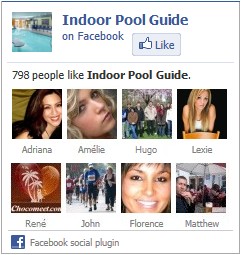
Combined Chlorine
Combined chlorine is formed by chlorine combining with ammonia and other nitrogencontaining organic compounds. Some sources of these compounds include perspiration, urine, saliva and body oils. These combined forms of chlorine, also called chloramines, are still disinfectants, but they are 40 to 60 times less effective than free available chlorine.
Chloramines kill slowly, so when they are formed in swimming-pool water, the FAC is no longer present for « instant kill » sanitation. Free available chlorine and combined chlorine exist together in many pools. There are simple tests to measure the levels of each. These will be described in detail in another chapter.
In addition to reduced effectiveness against bacteria, chloramines cause eye irritation and the so-called ‘chlorine odor » that swimmers complain about. Chloramines have a foul, irritating odor; free chlorine in water in normal concentration has no discernable odor.
Breakpoint Chlorination
When chloramines are known to be present, either by test (over 0.2 ppm combined chlorine) or because of a foul chlorine odor, the continued addition of chlorine causes a corresponding rise in measurable chlorine residual, but eventually, a point is reached at which addition of chlorine causes a sudden drop in residual. This phenomenon is accompanied by a reduction in eye irritation and chlorine odor.
Investigation reveals that when the total concentration of chlorine in the water reaches seven times the amount of combined chlorine, the oxidation of chloramines and other organic compounds is complete. The point of residual concentration at which this sudden reaction occurs is called the breakpoint. Chlorine remaining or added after the breakpoint is reached exists as free residual chlorine, and all the combined residual is oxidized. The breakpoint varies in its speed and amplitude, depending upon the organic matter present. In some waters, the breakpoint is hardly discernible.
The practice of periodic superchlorination is actually an attempt to pass the breakpoint to rid the water of an accumulation of combined chlorine and potential chlorineconsuming compounds.

